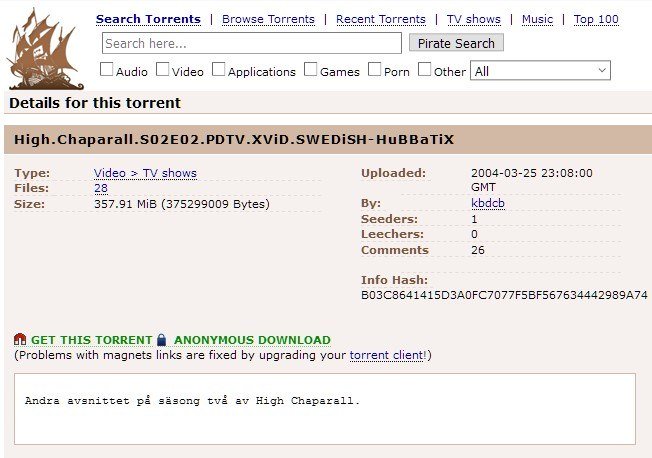‘Hellboy’ Must Explain Calculation For the $270,000 Piracy Damages Claim
jeudi 26 mars 2020 à 21:44 Last summer, the makers of the movie “Hellboy” (HB Productions) filed a complaint against torrent site MKVCage at a Hawaii federal court.
Last summer, the makers of the movie “Hellboy” (HB Productions) filed a complaint against torrent site MKVCage at a Hawaii federal court.
The movie company accused the site and its operator of promoting and distributing pirated copies of the Hellboy movie while demanding an end to the activity.
The lawsuit quickly had an effect as MKVCage became unreachable. At the same time, the uploader stopped pushing torrents to other sites as well. This meant that part of the plan had succeeded, without the torrent site putting up a defense.
But HB Productions wanted more. The company argued that the site caused irreparable damage and demanded compensation from the operator, a Pakistani man named Muhammad Faizan.
Since Faizan didn’t show up in court, the movie company’s attorney Kerry Culpepper requested a default judgment totaling more than $270,000 in infringement damages.
“The certain sum of $270,902.58 […] was calculated by multiplying the number of instances of infringement in the United States logged by Plaintiff’s agent by the price for purchasing a copy of the motion picture in Hawaii,” Culpepper wrote to the court.
Despite a hefty damages award hanging over his head, Faizan remained quiet. This generally means that the court will side with the plaintiff but in this case, Magistrate Judge Kenneth J. Mansfield is reluctant.
In a recently issued report and recommendations, Mansfield advises the court to deny the damages request, as the “sum” is not as “certain” as Hellboy’s attorney makes it out to be.
“The First Amended Complaint and the Motion do not indicate how Plaintiff calculated its asserted $270,902.58 damages amount. Nor does Plaintiff’s Motion include documents setting forth amounts necessary to calculate a certain damages sum,” Judge Mansfield writes.
“Without such information, the Court is unable to determine the formula Plaintiff used to calculate its alleged damages. The Court thus finds that Plaintiff fails to establish that its claim is for a ‘sum certain’ and recommends that the district court deny the Motion,” he adds.
This recommendation serves as guidance to the federal court, which has yet to rule on the matter. However, before it could do so, HB Production’s attorney already withdrew his request for a default judgment.
The movie company now plans to file a new motion in the near future where it will provide more detail on its calculations. Among other things, it will have to explain in detail how many infringements were logged, and what retail price for the movie the company chose.
By law, the maximum statutory damages are $150,000 per work. Since HB Productions asked for a substantially higher amount here, these details are crucial in order to determine whether it will be granted, or not.
—
A copy of Magistrate Judge Kenneth J. Mansfield’s report and recommendations is available here (pdf)
Drom: TF, for the latest news on copyright battles, torrent sites and more. We also have an annual VPN review.

 The Pirate Bay has weathered quite a few storms since its inception.
The Pirate Bay has weathered quite a few storms since its inception. 



 Over the past three years, adult entertainment company Strike 3 Holdings has filed thousands of cases in US federal courts.
Over the past three years, adult entertainment company Strike 3 Holdings has filed thousands of cases in US federal courts.